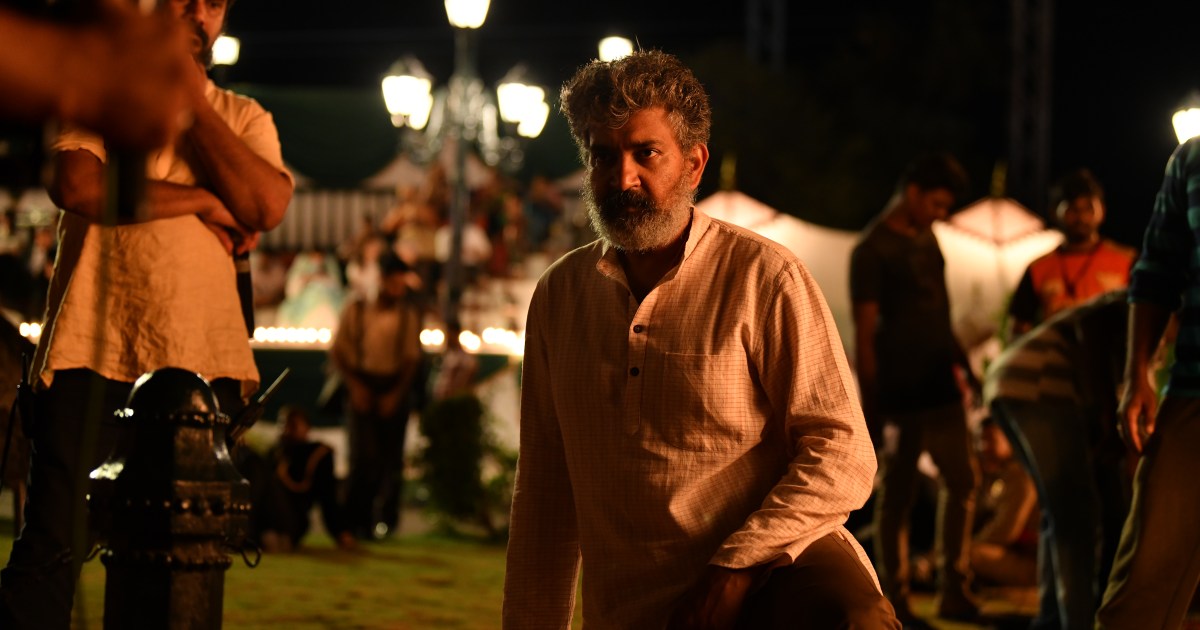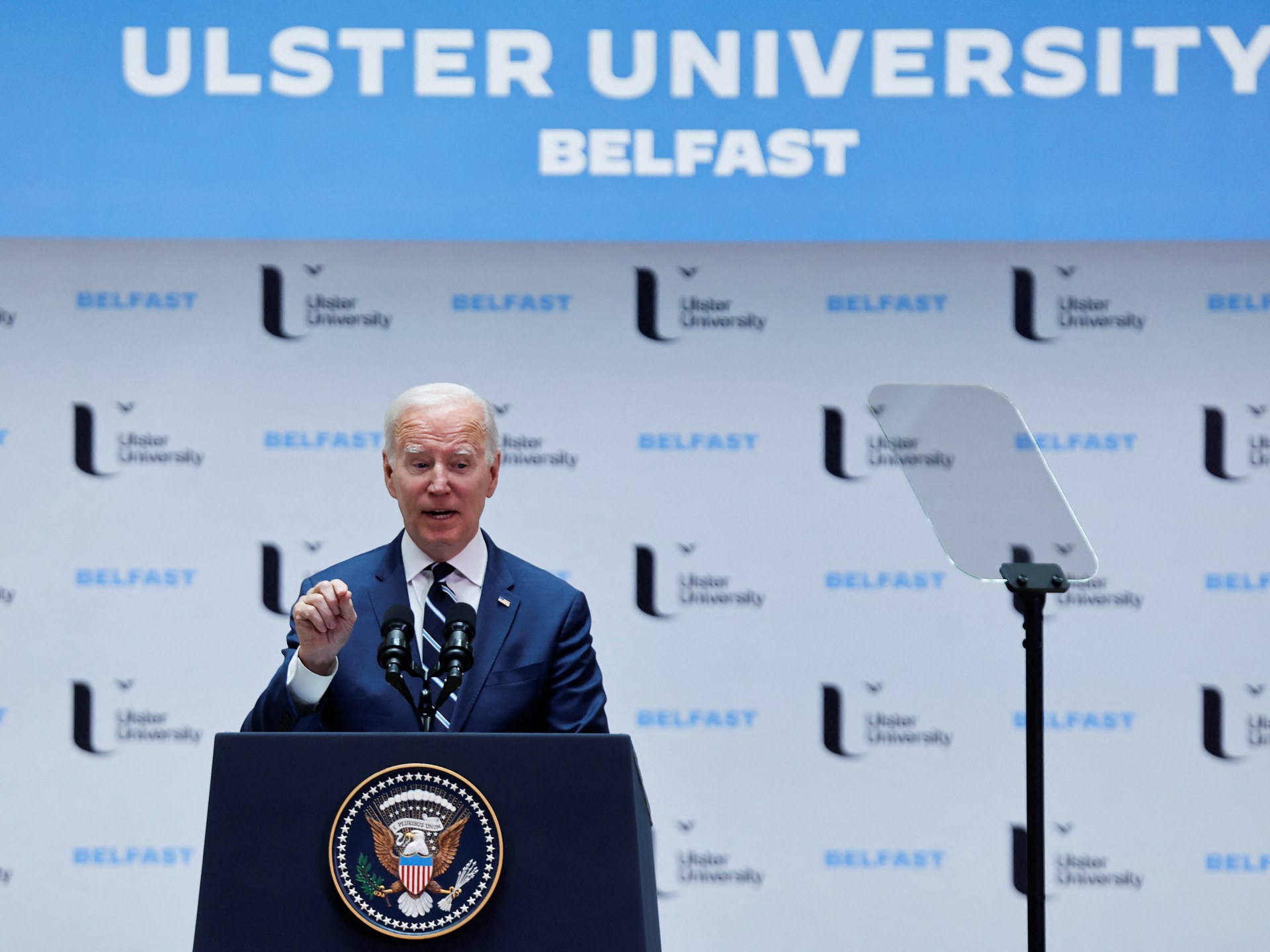Indian director Rajamouli scores a global hit with new film RRR
New Delhi, India – “I only know big emotions,” says SS Rajamouli, currently India’s most commercially successful film director.
Rajamouli, who makes films in Telugu, a language spoken in the southern Indian states of Andhra Pradesh and Telangana, is talking about his latest blockbuster hit, RRR – India’s second most expensive film and its third most successful worldwide. But he could also be talking about his predominant emotion right now: overwhelming joy.
Rajamouli is thrilled that foreign audiences, as well as Indians at home and abroad, have also “loved” his film – and that it’s not a “patronising kind of love”.
“You know, sometimes when you’re a larger audience and some small film tries to make some attempt, you will say, ‘Those guys made a good effort.’ It’s not like that … It is like, ‘Wow, guys … There is something here that’s really, really enthralling.’ I didn’t expect that,” Rajamouli tells Al Jazeera over a Zoom call.
Made on a budget of $72m, RRR (Rise, Roar, Revolt) was released on March 25 across 21 countries. A three-hour-and-seven-minute long action-adventure about India’s struggle against British colonialism set in the 1920s, it debuted at number three at the US Box Office, and number two at the UK and Australian box offices. In four weeks it has already taken $141m worldwide.
Some critics have viewed Rajamouli, 48, as a pioneer in Telugu cinema, who has challenged the traditional dominance of Bollywood in India and overseas.
“Rajamouli has an impeccable track record. Every film of his has worked … It would not be wrong to say that he’s the biggest [Indian film director] ever,” Komal Nahta, an Indian film trade analyst, told Al Jazeera.
![Director S.S. Rajamouli (left) and Telugu film star Ram Charan on the sets of RRR [Media House Global]](https://www.aljazeera.com/wp-content/uploads/2022/04/Rajamouli-RamCharanWorkingStill.jpeg?w=770&resize=770%2C513)
Riding the Rajamouli wave
Sine his film-making career began in 2001, Rajamouli has directed 12 films – all box office hits. All were originally shot in Teluga, with some dubbed into other Indian languages.
His creative ambitions and the budgets of his films have grown over time. Simultaneously, the audience for south Indian films has increased.
India speaks 121 languages and makes films in about 24 of those, including Hindi-speaking Bollywood films. Its film industry, valued at about $2.3bn, is also the world’s largest producer of films.
In 2020-2021, Bollywood’s box office collections were $200m, while Telugu films collected $215m.
Yet Bollywood is not only the synonym for Indian cinema but receives a disproportionate amount of attention and financial support, while the rest is clubbed under the derisive tag of “regional cinema”.
Rajamouli has challenged that trend; particularly beginning with his 2012 film, Eega (The Fly), a fantasy film in which the hero is killed, reincarnated as a fly, and sets off on a mission to avenge his murder, and then even more successfully Baahubali (One With Strong Arms), a two-part action-fantasy swashbuckler that released in 2015 and 2017.
Eega received critical acclaim and was a hit on satellite TV with Hindi-speaking, Bollywood-loving audiences in India, while the two-part Baahubali, made on a budget of $59m, collected $314m at the world box office.
The second part of the Baahubali franchise, Baahubali: The Conclusion, released in 2017, remains India’s second most successful film at the worldwide box office. It is also India’s highest-grossing, most-watched film ever. It expanded Telugu films’ box office take in India by five times, while the US market for Telugu films grew from about $1-2m to $20m.
It catapulted Rajamouli into becoming India’s most expensive director, commanding about $13m to direct a film.
Films by other directors in Telugu and Kannada, another south India language, have been riding the Rajamouli wave; their ambitions and budgets have grown, as have their profits and markets.
Pushpa: The Rise, first of a two-part Telugu action drama about the rise of a labourer in the red sandalwood/sander smuggling syndicate, released on December 17, 2021, was India’s second-biggest hit in 2020-2021.
KGF: Chapter 2, second of a two-part film about an assassin and the gold mafia, released worldwide on April 14, is the first Kannada movie to collect $5m in the US in five days. Made on a budget of $13m, its worldwide box office collections in 15 days stand at $125m.
Meanwhile, many big Bollywood films have flopped recently.
Bollywood’s 83, a film about the Indian cricket team’s historic win at the 1983 World Cup, was made for $35m but barely managed to recover $25m. Bell Bottom, a plane highjacking drama loosed based on a real event, released in August last year, lost a staggering $15m – despite starring Akshay Kumar, one of Bollywood’s highest-paid actors.
![Telugu film director S.S. Rajamouli on the sets of RRR [Media House Global]](https://www.aljazeera.com/wp-content/uploads/2022/04/SSRajamouli1.jpeg?w=770&resize=770%2C513)
“I don’t want to make it a me versus Bollywood kind of thing,” Rajamouli said when asked about the divergent fortunes of his films compared with recent Bollywood productions. He put his success down to his work ethic and “continuance” and to thinking big, growing, learning from mistakes and building on successes.
“It’s not because I have some special ability in storytelling, definitely not,” he said.
Shobu Yarlagadda, part of the duo who produced the Baahubali franchise, told Al Jazeera that Bollywood is not scoring big at the box office because it has become more urban centric and “moved away from the heroism, raw emotions and other elements that make up commercial cinema”.
“[Telugu cinema] still does that very well.”
RRR tells a fictionalised epic of two real-life Indian revolutionaries who fought the British Raj. The film’s two main characters are played by two of Telugu cinema’s top actors – Ram Charan and Jr NTR. But the film also features a huge ensemble cast of British, Irish and American actors, and to further expand the market for his films, Rajamouli cast two big Bollywood stars – Alia Bhatt and Ajay Devgn – for the first time.
The stories Rajamouli likes to tell are inspired by his screenwriter father – who has written nine of his12 films – and the hugely popular Indian comics, Amar Chitra Katha (Immortal Illustrated Story), that he grew up reading.
Created in the late ’60s and ’70s, these comic books told moralistic, mythological and inspiring stories about Indian gods, gurus, kings and queens. Drawn mostly from the two Hindu epics – Mahabharata and Ramayana – men fought honourable battles while pious, voluptuous women in tiny blouses suffered humiliation. Evil was often depicted as bearded, mercenary and Mughal.
But for Rajamouli this was a world where, “When the hero is walking, the ground would split open and the sky would burst into flames”. That “grand scheme of things”, he says, fired his imagination. “And when I set out to tell stories, I didn’t want to make them any different.”
RRR features several elaborate battle scenes and a 4.5-minute-long peppy song and dance sequence shot in front of Mariinskyi Palace, Ukraine President Volodymyr Zelenskyy’s official residence, with about three-quarters of the film comprised of visual effects.
Bhatt, one of Bollywood’s top actresses, is the film’s female lead. Her presence is fleeting and some critics have said her role feels like an afterthought in a high-octane bromance about two patriotic men driven by love, honour and revenge.
Rajamouli has also faced criticism that patriotism in his films often borders on jingoism, and that his films are male-centric, even sexist.
Rajamouli dismisses both claims, saying that his focus while writing and directing a film is on telling a story and conveying its emotions, not on gender.
“In RRR, I didn’t talk about patriotism. I talked about friendship. And if someone [says] it’s an over-the-top patriotic film, I can just smile.”
![A poster of RRR [Media House Global]](https://www.aljazeera.com/wp-content/uploads/2022/04/RRR-Poster.jpeg?w=770&resize=770%2C362)




